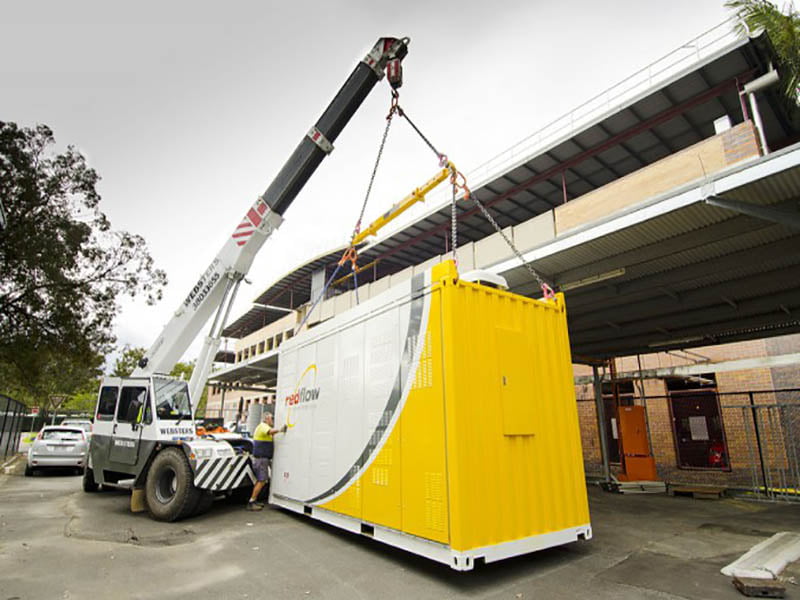The grid scale battery storage project under way in Victoria is likely to raise a bunch of issues around which technologies to use and how best to leverage local industry participation.
The Victorian government is plugging $5 million into a 20 megawatt battery storage facility and has called for expressions of interest from battery storage firms capable of supplying grid-scale systems ahead of issuing a formal tender in April.
There are formidable political winds blowing around grid scale battery storage. Blackouts in South Australia and the NSW energy grid being brought to the brink of failure during recent heatwaves have political conservatives and progressives at war over how to maintain energy security as fossil fuels like coal become obsolete and the cost of renewables like solar continue to drop.

While the fossil fuel versus renewables debate will likely rage on for years, the Victorian project grid-scale battery project is in the moment and will bring on a contest between the differing battery storage technologies and whether to foster local battery and energy system outfits.
The Victorian project will inform other grid battery storage developments around the country as it feeds into a large scale storage expression of interest process already underway by the Australian Renewable Energy Agency (ARENA) and Clean Energy Finance Corporation (CEFC).
ARENA has agreed the project will receive agency funding if it meets the selection criteria.
“The key determinant of a storage solution is cost and risk, which depends on the primary purpose of the battery as well as environmental conditions,” said an ARENA spokesperson.
Victoria will be able to choose from the three main battery technologies on offer: Lithium ion batteries favoured in phones and vehicles, advanced forms of traditional lead acid batteries and the new flow batteries.
Each has their pluses and minuses. Lithium ion technology is light with high energy density compared to zinc bromine flow and lead acid.
On the downside, lithium ion is more sensitive to temperature and needs sophisticated cooling enclosures for use in grid-scale facilities.
Tesla of electric vehicle fame is a champion of lithium ion and has a product called the Powerpack for grid-scale use.
It can also claim future massive scale production with its Gigafactory partnership with Panasonic scheduled to come on line in 2020 and produce 35 gigawatt-hours of batteries annually.
Tesla was contacted by InnovationAus.com with questions on whether it was interested in being involved with the Victorian project but the firm had not responded by publication time.
Zinc bromine flow batteries are more tolerant of hot and cold conditions and unlike lithium ion are fire retardant. Also, unlike lithium ion , their storage capacity does not drop over time.
On the downside zinc bromine’s efficiency is lower than lithium-ion batteries and no-one is yet building massive scale factories like Tesla’s Gigafactory.
Advanced lead acid batteries have overcome the traditional weakness of the format in that they don’t need to frequently fully recharge and they are more efficient than zinc bromine flow batteries.
A spokesperson for ARENA said the agency was currently working with grid-scale storage projects involving lithium-ion batteries and with advanced lead acid but not with zinc bromine flow batteries.
On a local development front, ARENA said it was working with Ecoult, which offers an advanced lead-acid battery.
Ecoult was spun out of the CSIRO to commercialise the CSIRO UltraBattery and then bought by the big US lead acid battery maker East Penn Manufacturing in 2010.
South Australian firm Redflow, run by former broadband entrepreneur Simon Hackett, makes zinc bromine flow batteries. Production is outsourced to the big US formed but Singapore headquartered tech manufacturing outfit Flex, which makes the Redflow batteries in Mexico.
A spokesman for Redflow said the firm had responded to the Victorian grid-scale battery project.
“Redflow is working with its partners to propose a solution for the Victorian grid-scale trial,” the spokesperson said.
“As it’s a public tender, there will be a range of proposals, of which we are one. We believe Redflow has a strong solution offering, so we’re also working with the Victorian Government directly to demonstrate our value.”
Disclosure: Stuart Kennedy’s self-managed super fund owns shares in Redflow.
Do you know more? Contact James Riley via Email.

